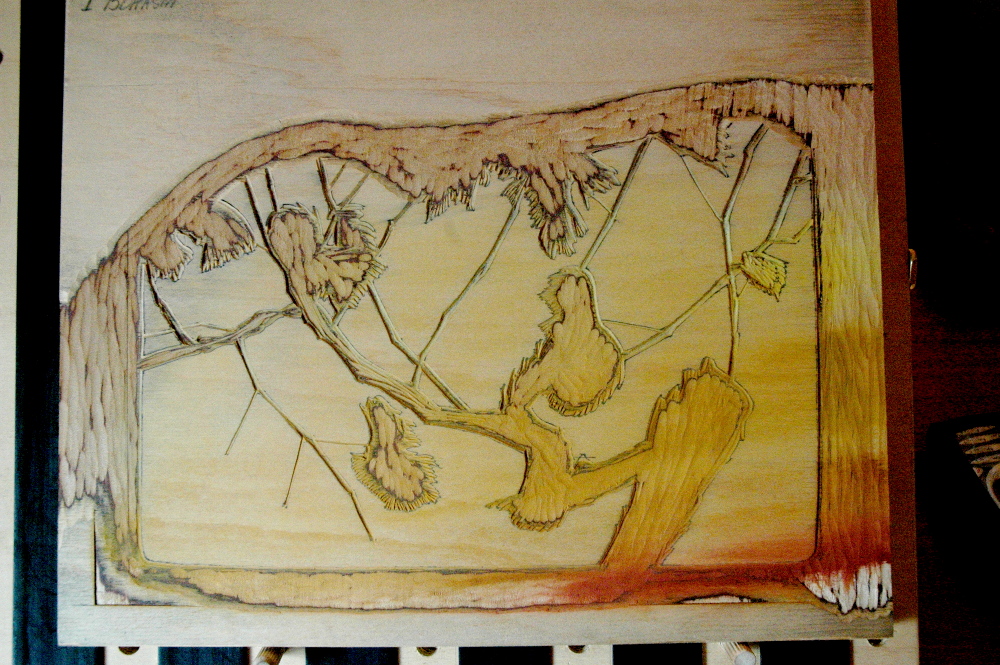

- Moku hanga printmaking early 1900s archive#
- Moku hanga printmaking early 1900s full#
- Moku hanga printmaking early 1900s series#
Josei Moku Hanga To: I think these are the best tools available for the price. My favorites are the versatile 6.0 mm "V" gouge and the big 10.5 mm "U" gouge for clearing large areas of wood or lino. My favorites are the 6.0 mm and 9.0 mm "U" tools. I prefer the "U" gouges over the "V" gouges. Power Grip : you can get a nice set of Power Grip tools for between $20-$50. One downside of this tool is that it's best used on linoleum and soft "rubber" carving blocks (like Speedy Carve and MOO Carve), not wood. I find the small "V" gouge indispensable.

Speedball Linoleum Cutter: While some printmakers might consider this mearly a beginner's tool, I love it and use it all the time when carving linoleum. It includes a Speedball Linoleum Cutter, a couple Power Grip "U" gouges and numerous Josei Moku Hanga To tools of different sizes. The faculty will offer alternative assignments if conditions or illness prevent students from accessing our synchronous meetings, which will allow students to earn comparable credit.My preferred set of tools is an assortment of different brands that balance cost and quality. are optional and additional that may provide a means of contemporary exploration of the traditional Japanese woodblock printing techniques to define a unique and innovative style of expression! Other materials such as watercolor, watercolor pencils, color pencils, etc. This will include traditional rice paper for printing, basic carving tools and sharpening stone, bamboo baren, brushes, palette, nori (rice paste), and black Sumi ink. Students will be required to purchase a basic supply kit that will be theirs to keep. Students should be prepared to invest 8-10 hours a week to complete all projects outside of class sessions. Students will learn wood carving, inking, and hand-printing with water-based ink from a simple home studio that only requires a table and water for clean-up. Through step-by-step demonstrations and video tutorials, students will be expected to take notes and work a-synchronistically (independent) during the week.

Working in a collaborative manner, there will be opportunities to hold class critique sessions for peer review and also post to a class blog in Canvas.
Moku hanga printmaking early 1900s archive#
The images on display are from our archive of sold Japanese prints.

Usually it takes him 3 months to create a new design. Ryusei Okamoto works exclusively in this old Japanese tradition, and he performs all steps himself - design, carving and printing.
Moku hanga printmaking early 1900s series#
Through investigation of printing techniques dating back to the Edo period (1603-1868) for the style known as Ukiyo-e, this class will explore and demonstrate a close appreciation of nature in the practice. The series First Love is an example for moku hanga on a level of excellence and perfection. Regularly scheduled synchronous (together) virtual meetings will take place once a week. Art and nature come together in this hands-on exploration of Mokuhanga printmaking, also known as Japanese woodblock printing. A computer and access to the internet are preferred but not required, a phone may be used to connect during class sessions, all assignments must be submitted for review at the end of the session attended. Assignments are supportive of the beginner to advanced student.Īll work will be conducted remotely, using Canvas and Zoom. The publisher Watanabe Shzabur (1885-1962), noting the decline in xylographic production due to competition from new imported techniques such as photography and lithography, was the movement's greatest promoter.
Moku hanga printmaking early 1900s full#
This course is available for a full 10-week session earning 8 credits, or an introductory first 5-week session earning 4 credits. The Shin hanga (literally new prints ) art movement was a revival of traditional printmaking (ukiyo-e) in the early 20th century. In this online-based summer program, traditional methods of Eastern printmaking will be explored through a Western lens. Subject matter will be open for the student to decide, and the technical process will be influenced by the historical practices of Japanese printmaking. Through investigation of printing techniques dating back to the Edo period (1603-1868) for the style known as Ukiyo-e, this class will explore and demonstrate a close appreciation of nature in the practice of art-making. Art and nature come together in this hands-on exploration of Mokuhanga printmaking, also known as Japanese woodblock printing.


 0 kommentar(er)
0 kommentar(er)
